On-Line Multi-Damage Scanning Spatial-Wavenumber Filter Based Imaging Method for Aircraft Composite Structure
Abstract
:1. Introduction
2. On-Line Multi-Damage SSWF and Wavenumber-Time Imaging
2.1. On-Line Multi-Damage SSWF
2.2. Multi-Damage Wavenumber-Time Imaging Method
3. The SSWF Based Multi-Damage Mapping Imaging
- (1)
- A PZT 2D cross-shaped array is adopted to fulfill the scanning spatial-wavenumber filtering of the multi-damage scattering signal and wavenumber synthesis, which is necessary to realize the multi-damage mapping imaging.
- (2)
- Based on the generated wavenumber-time image and wavenumber, an imaging mapping method is proposed to convert the wavenumber-time image to an angle-distance image, from which the multiple damages can be directly located.
3.1. PZT 2D Cross-Shaped Array Based Wavenumber Synthesis
3.2. Angle-Distance Image Mapping Method
3.3. Implementation Process of the Multi-Damage Imaging Method
- (1)
- Acquire the multi-damage scattering signals by adopting a PZT 2D cross-shaped array.
- (2)
- Establish a multi-damage SSWF and then apply it to the acquired multi-damage scattering signals, according to Equation (13).
- (3)
- Based on the scanning spatial-wavenumber filtering result, generate two wavenumber-time images and calculate the wavenumber ξc of the multi-damage scattering signals, according to Equation (19).
- (4)
- By taking advantage of ξc and the two wavenumber-time images, convert the wavenumber-time images to an angle-distance image based on Equation (21), and then directly locate the multiple damages.
4. Experimental Validations
4.1. Validation Setup
4.2. Validation Results of Simulated Damages
4.3. Validation Results of Real Damages
5. Conclusions
Acknowledgments
Author Contributions
Conflicts of Interest
References
- Soutis, C. Carbon fiber reinforced plastics in aircraft construction. Mater. Sci. Eng. A 2005, 412, 171–176. [Google Scholar] [CrossRef]
- Boller, C.; Chang, F.K.; Fujino, Y. Encyclopedia of Structural Health Monitoring; John Wiley and Sons: Hoboken, NJ, USA, 2009. [Google Scholar]
- Su, Z.Q.; Cheng, L.; Wang, X.M.; Yu, L.; Zhou, C. Predicting delamination of composite laminates using an imaging approach. Smart Mater. Struct. 2009, 18, 074002. [Google Scholar] [CrossRef]
- He, J.J.; Zhou, Y.B.; Guan, X.F.; Zhang, W.; Wang, Y.R.; Zhang, W.F. An Integrated Health Monitoring Method for Structural Fatigue Life Evaluation Using Limited Sensor Data. Materials 2016, 9, 894. [Google Scholar] [CrossRef]
- Moll, J.; Schulte, R.T.; Hartmann, B.; Fritzen, C.P.; Nelles, O. Multi-site damage localization in anisotropic plate-like structures using an active guided wave structural health monitoring system. Smart Mater. Struct. 2010, 19, 045022. [Google Scholar] [CrossRef]
- Boller, C. Ways and options for aircraft structural health management. Smart Mater. Struct. 2001, 10, 432. [Google Scholar] [CrossRef]
- Rogge, M.D.; Leckey, C. Characterization of impact damage in composite laminates using guided wavefield imaging and local wavenumber domain analysis. Ultrasonics 2013, 53, 1217–1226. [Google Scholar] [CrossRef] [PubMed]
- Giurgiutiu, V. Structural Health Monitoring of Aerospace Composites; Academic Press: Atlanta, GA, USA, 2015. [Google Scholar]
- Yang, J.S.; He, J.J.; Guan, X.F.; Wang, D.J.; Chen, H.P.; Zhang, W.F.; Liu, Y.M. A probabilistic crack size quantification method using in-situ Lamb wave test and Bayesian updating. Mech. Syst. Signal Proc. 2016, 78, 118–133. [Google Scholar] [CrossRef]
- Wang, Q.; Yuan, S.F. Baseline-free imaging method based on new PZT sensor arrangements. J. Intell. Mater. Syst. Struct. 2009, 20, 1663–1673. [Google Scholar]
- Hall, J.S.; Michaels, J.E. Computational efficiency of ultrasonic guided wave imaging algorithms. IEEE Trans. Ultrason. Ferroelectr. Freq. Control 2011, 58, 244–248. [Google Scholar] [CrossRef] [PubMed]
- Qiu, L.; Liu, M.L.; Qing, X.L.; Yuan, S.F. A quantitative multi-damage monitoring method for large-scale complex composite. Struct. Health Monit. 2013, 12, 183–196. [Google Scholar] [CrossRef]
- Xu, B.L.; Giurgiutiu, V. Single mode tuning effects on Lamb wave time reversal with piezoelectric wafer active sensors for structural health monitoring. J. Nondestruct. Eval. 2007, 26, 123–134. [Google Scholar] [CrossRef]
- Miao, X.T.; Wang, D.; Ye, L.; Lu, Y.; Li, F.C.; Meng, G. Identification of dual notches based on time-reversal Lamb waves and a damage diagnostic imaging algorithm. J. Intell. Mater. Syst. Struct. 2011, 22, 1983–1992. [Google Scholar] [CrossRef]
- Wang, C.H.; Rose, J.T.; Chang, F.K. A synthetic time-reversal imaging method for structural health monitoring. Smart Mater. Struct. 2004, 13, 415. [Google Scholar] [CrossRef]
- Cai, J.; Shi, L.H.; Yuan, S.F.; Shao, Z.X. High spatial resolution imaging for structural health monitoring based on virtual time reversal. Smart Mater. Struct. 2011, 20, 055018. [Google Scholar] [CrossRef]
- Wang, D.; Ye, L.; Su, Z.Q.; Lu, Y.; Li, F.C.; Meng, G. Probabilistic damage identification based on correlation analysis using guided wave signals in aluminum plates. Struct. Health Monit. 2010, 9, 133–144. [Google Scholar] [CrossRef]
- Zhou, C.; Su, Z.Q.; Cheng, L. Quantitative evaluation of orientation-specific damage using elastic waves and probability-based diagnostic imaging. Mech. Syst. Signal Proc. 2011, 25, 2135–2156. [Google Scholar] [CrossRef]
- Hettler, J.; Tabatabaeipour, M.; Delrue, S.; Van Den Abeele, K. Linear and nonlinear guided wave imaging of impact damage in CFRP using a probabilistic approach. Materials 2016, 9, 901. [Google Scholar] [CrossRef]
- Wu, Z.J.; Liu, K.H.; Wang, Y.S.; Zheng, Y.B. Validation and evaluation of damage identification using probability-based diagnostic imaging on a stiffened composite panel. J. Intell. Mater. Syst. Struct. 2015, 26, 2181–2195. [Google Scholar] [CrossRef]
- Yu, L.Y.; Giurgiutiu, V. In situ 2-D piezoelectric wafer active sensors arrays for guided wave damage detection. Ultrasonics 2008, 48, 117–134. [Google Scholar] [CrossRef] [PubMed]
- Holmes, C.; Drinkwater, B.W.; Wilcox, P.D. Advanced post-processing for scanned ultrasonic arrays: Application to defect detection and classification in non-destructive evaluation. Ultrasonics 2008, 48, 636–642. [Google Scholar] [CrossRef] [PubMed]
- Wandowski, T.; Malinowski, P.; Ostachowicz, W.M. Damage detection with concentrated configurations of piezoelectric transducers. Smart Mater. Struct. 2011, 20, 025002. [Google Scholar] [CrossRef]
- Zhong, Y.T.; Yuan, S.F.; Qiu, L. Multiple damage detection on aircraft composite structures using near-field MUSIC algorithm. Sens. Actuator A Phys. 2014, 214, 234–244. [Google Scholar] [CrossRef]
- Fan, Y.B.; Gu, F.S.; Ball, A. Acoustic emission monitoring of mechanical seals using MUSIC algorithm based on higher order statistics. Key Eng. Mater. 2009, 413, 811–816. [Google Scholar] [CrossRef]
- Engholm, M.; Stepinski, T. Direction of arrival estimation of Lamb waves using circular arrays. Struct. Health Monit. 2010, 10, 467–480. [Google Scholar] [CrossRef]
- Mesnil, O.; Yan, H.; Ruzzene, M.; Paynabar, K.; Shi, J. Fast wavenumber measurement for accurate and automatic location and quantification of defect in composite. Struct. Health Monit. 2016, 15, 223–234. [Google Scholar] [CrossRef]
- Ren, B.Y.; Lissenden, C.J. PVDF multielement lamb wave sensor for structural health monitoring. IEEE Trans. Ultrason. Ferroelectr. Freq. Control 2016, 63, 178–185. [Google Scholar] [CrossRef] [PubMed]
- Sohn, H.; Dutta, D.; Yang, J.Y.; Desimio, M.; Olson, S.; Swenson, E. Automated detection of delamination and disbond from wavefield images obtained using a scanning laser vibrometer. Smart Mater. Struct. 2011, 20, 045017. [Google Scholar] [CrossRef]
- Bae, D.Y.; Lee, J.R. A health management technology for multisite cracks in an in-service aircraft fuselage based on multi-time-frame laser ultrasonic energy mapping and serially connected PZTs. Aerosp. Sci. Technol. 2016, 54, 114–121. [Google Scholar] [CrossRef]
- Kudela, P.; Radzieński, M.; Ostachowicz, W. Identification of cracks in thin-walled structures by means of wavenumber filtering. Mech. Syst. Signal Proc. 2015, 50, 456–466. [Google Scholar] [CrossRef]
- An, Y.K.; Shen, Z.Q.; Wu, Z.S. Stripe-PZT sensor-based baseline-free crack diagnosis in a structure with a welded stiffener. Sensors 2016, 16, 1511. [Google Scholar] [CrossRef] [PubMed]
- Purekar, A.S.; Pines, D.J. Damage detection in thin composite laminates using piezoelectric phased sensor arrays and guided Lamb wave interrogation. J. Intell. Mater. Syst. Struct. 2010, 21, 995–1010. [Google Scholar] [CrossRef]
- Qiu, L.; Liu, B.; Yuan, S.F.; Su, Z.Q.; Ren, Y.Q. A scanning spatial-wavenumber filter and PZT 2-D cruciform array based on-line damage imaging method of composite structure. Sens. Actuator A Phys. 2016, 248, 62–72. [Google Scholar] [CrossRef]
- Velichko, A.; Wilcox, P.D. Guided wave arrays for high resolution inspection. J. Acoust. Soc. Am. 2008, 123, 186–196. [Google Scholar] [CrossRef] [PubMed]
- Qiu, L.; Yuan, S.F. On development of a multi-channel PZT array scanning system and its evaluating application on UAV wing box. Sens. Actuator A Phys. 2009, 151, 220–230. [Google Scholar] [CrossRef]
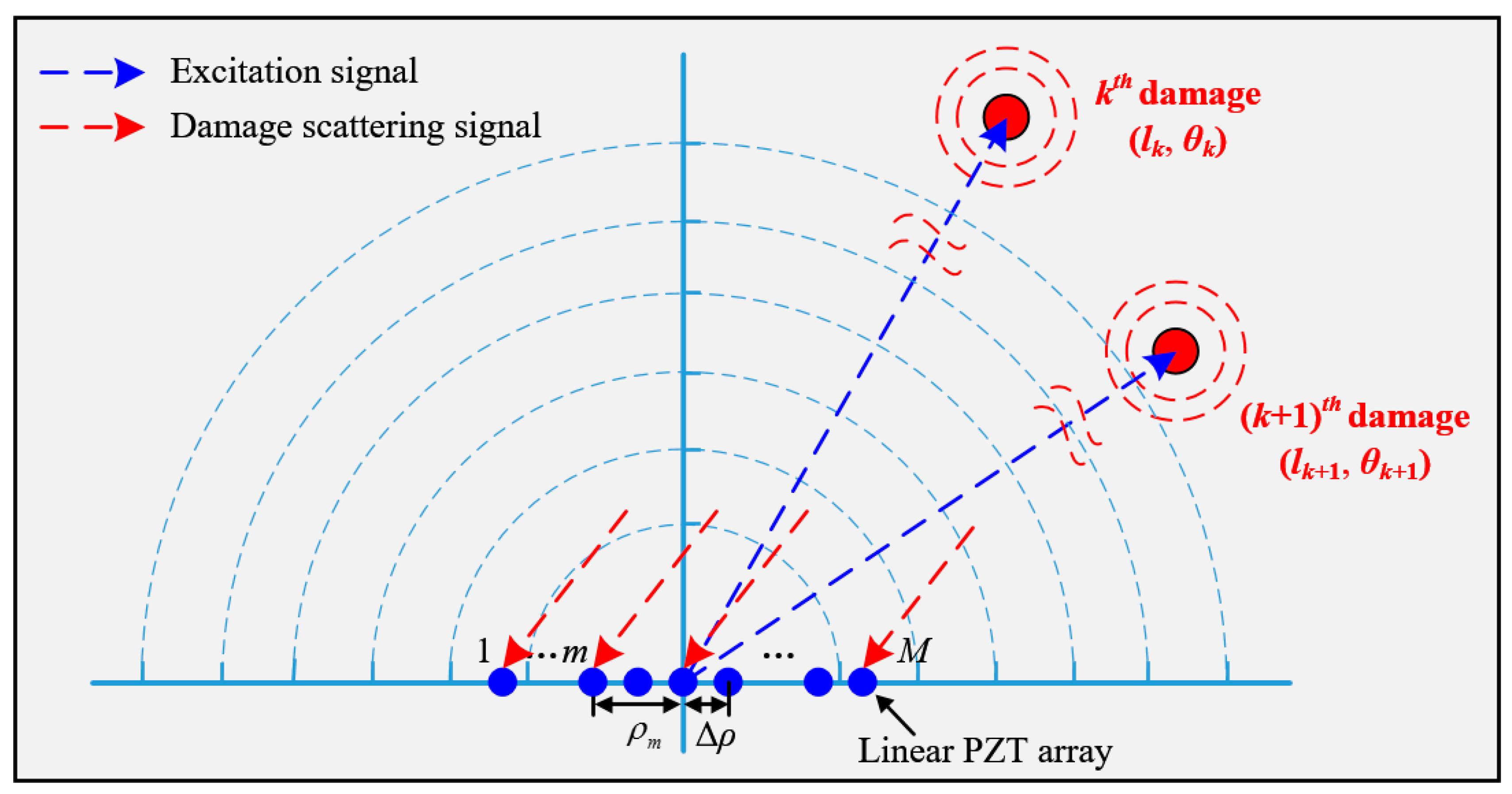
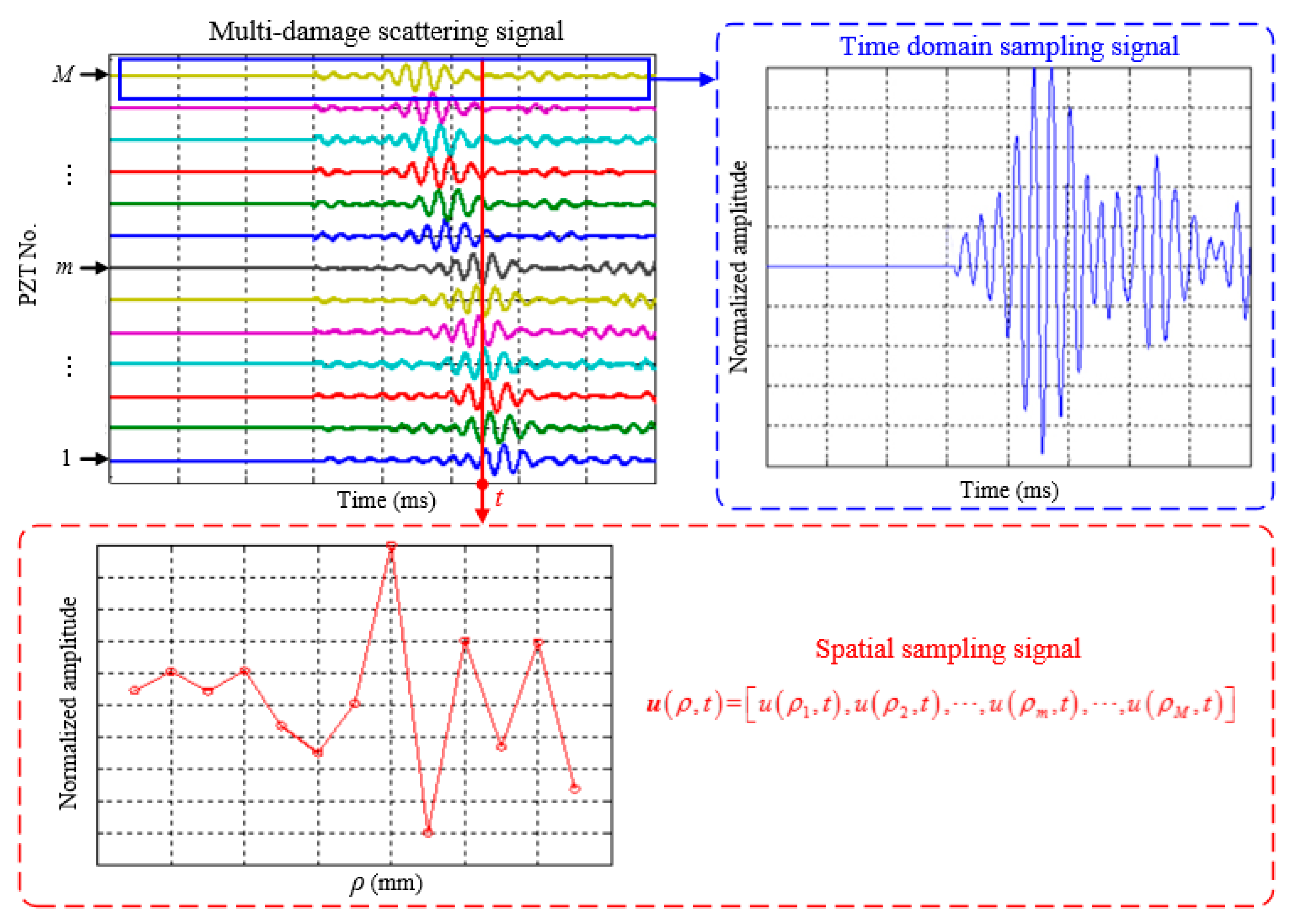
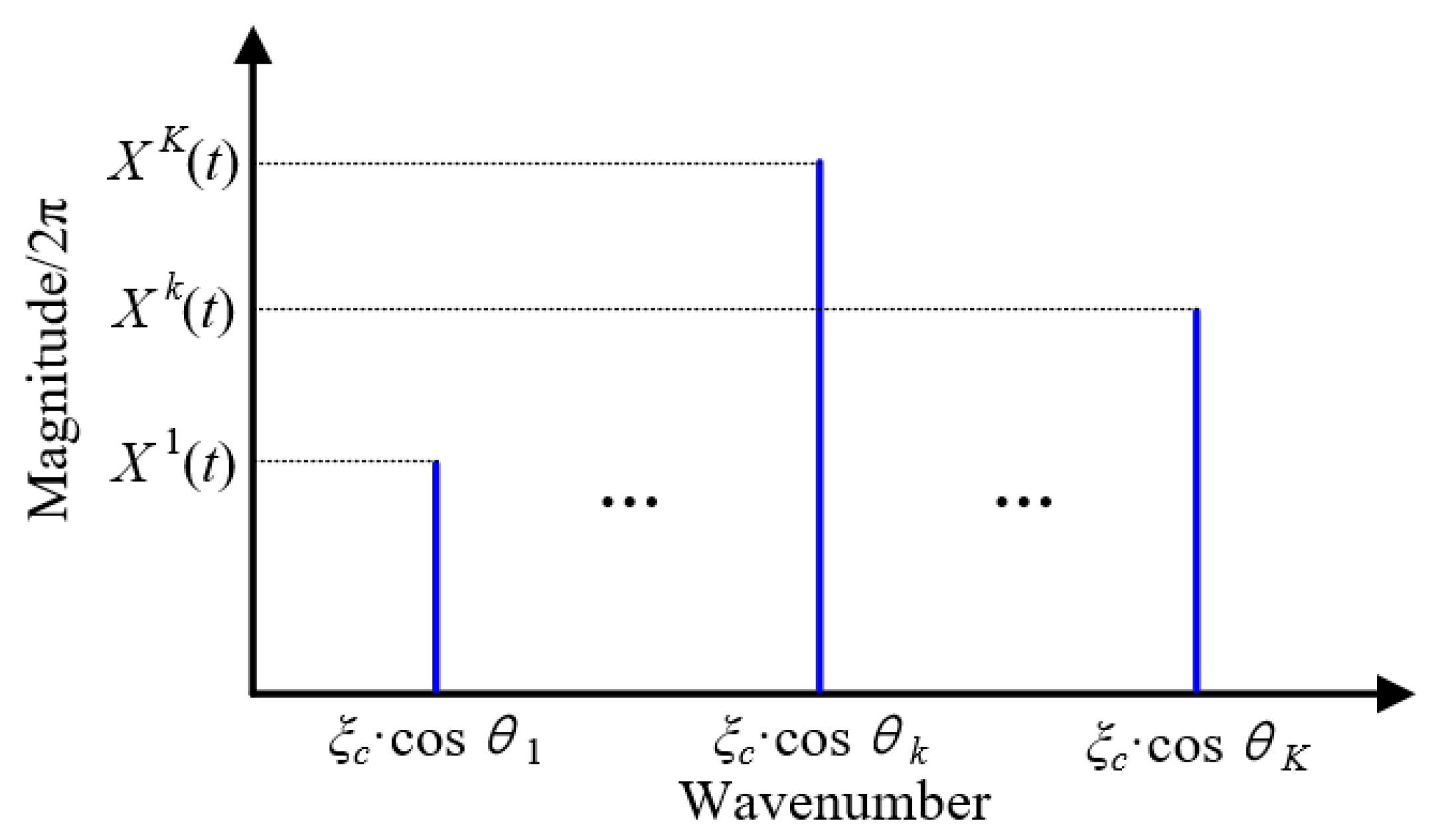
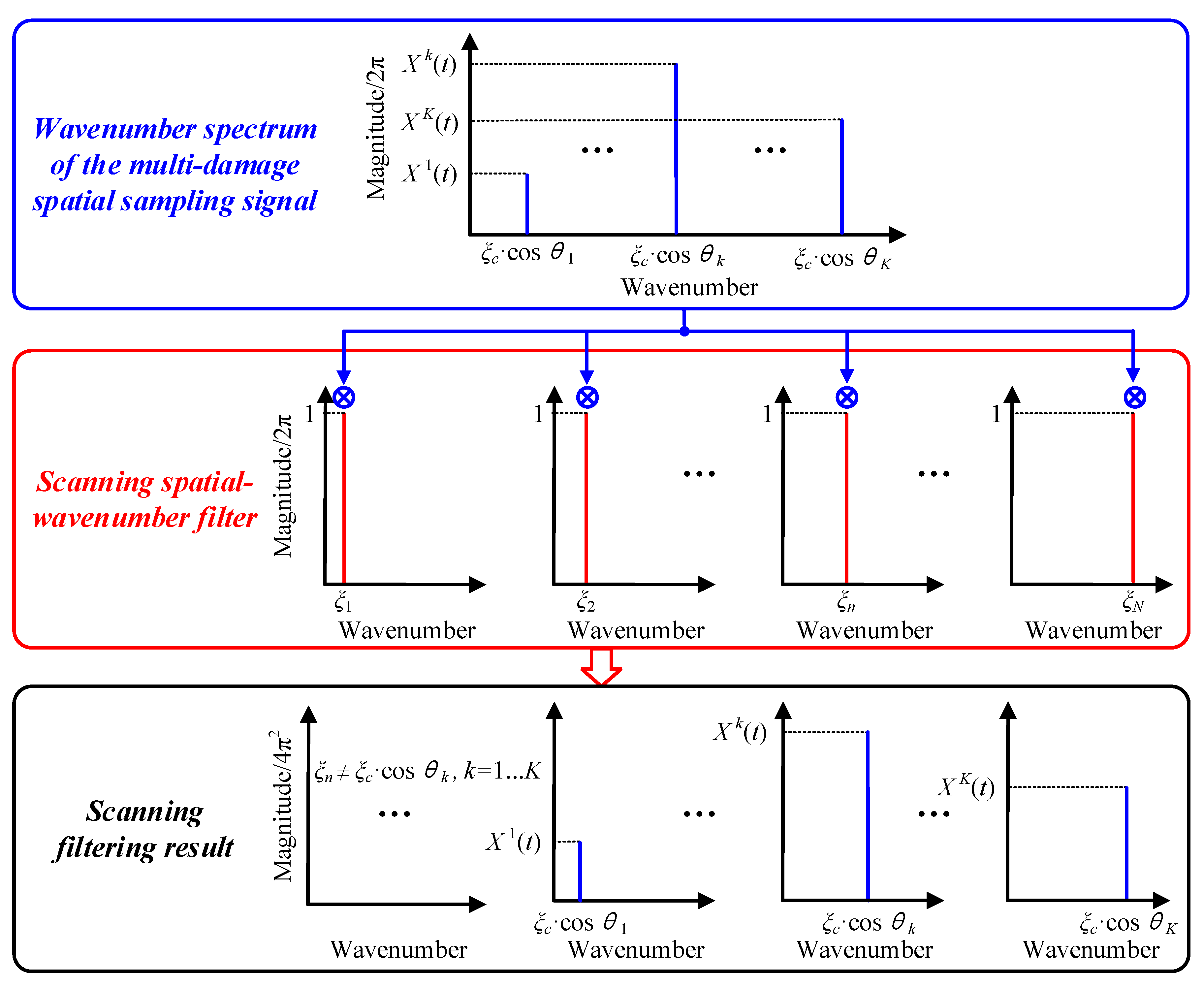

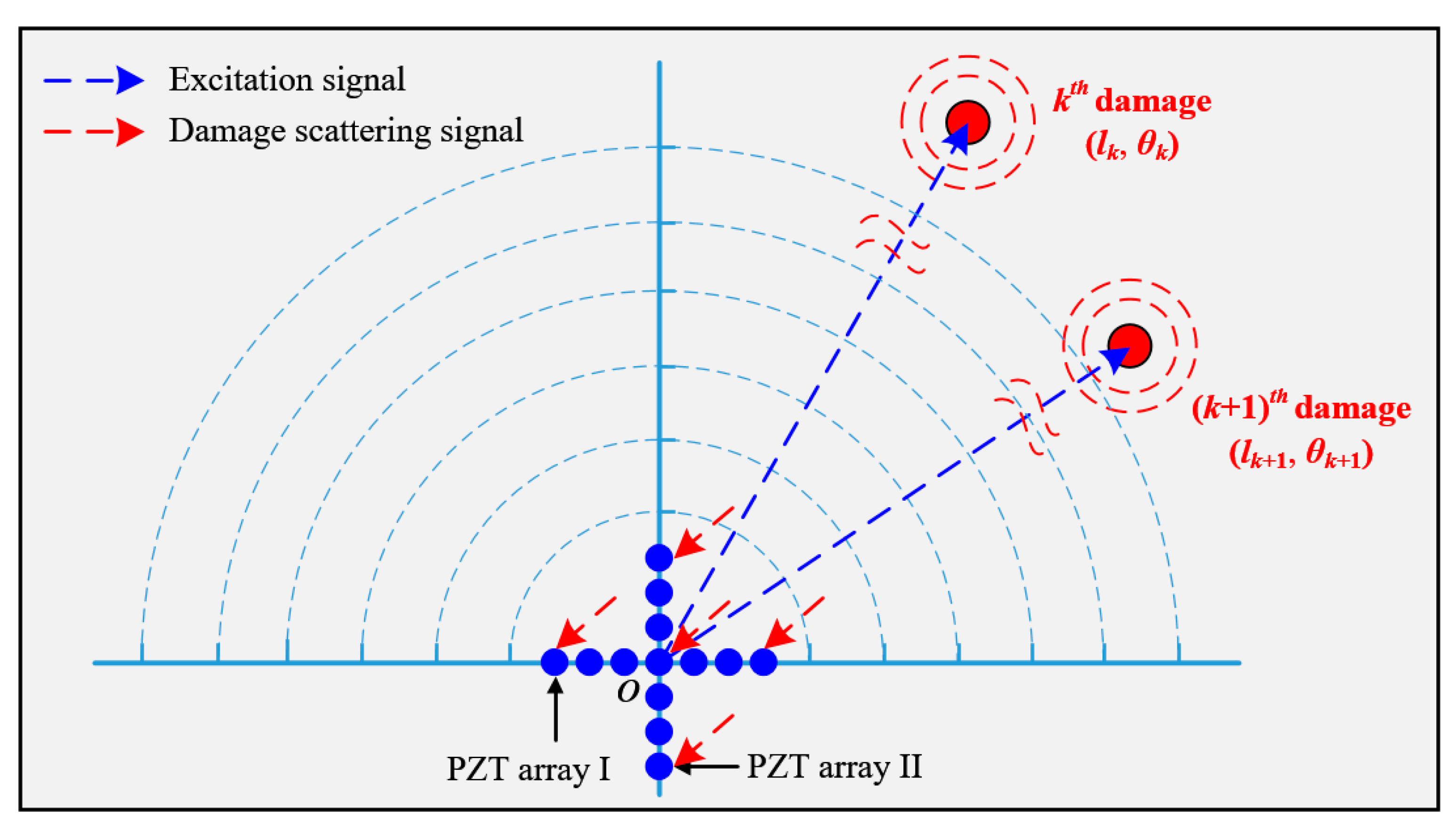
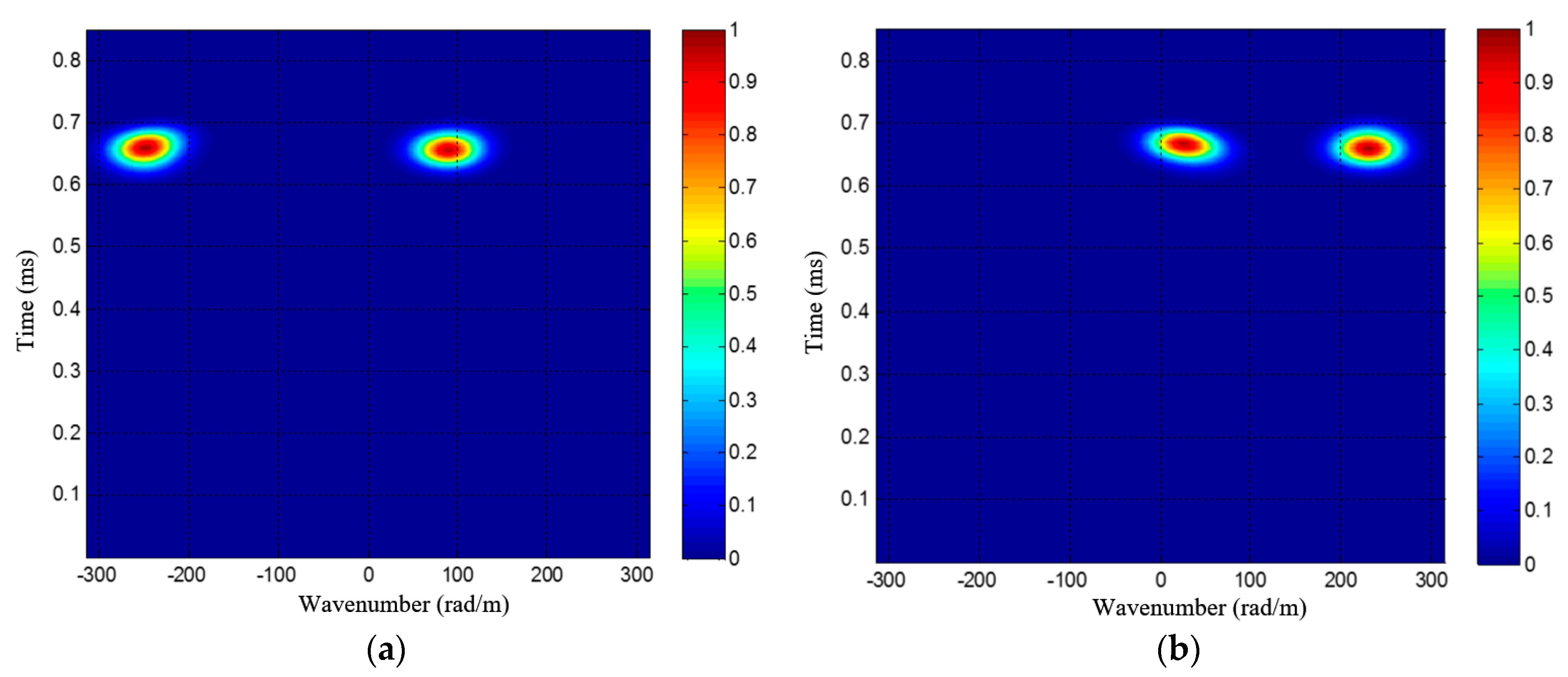
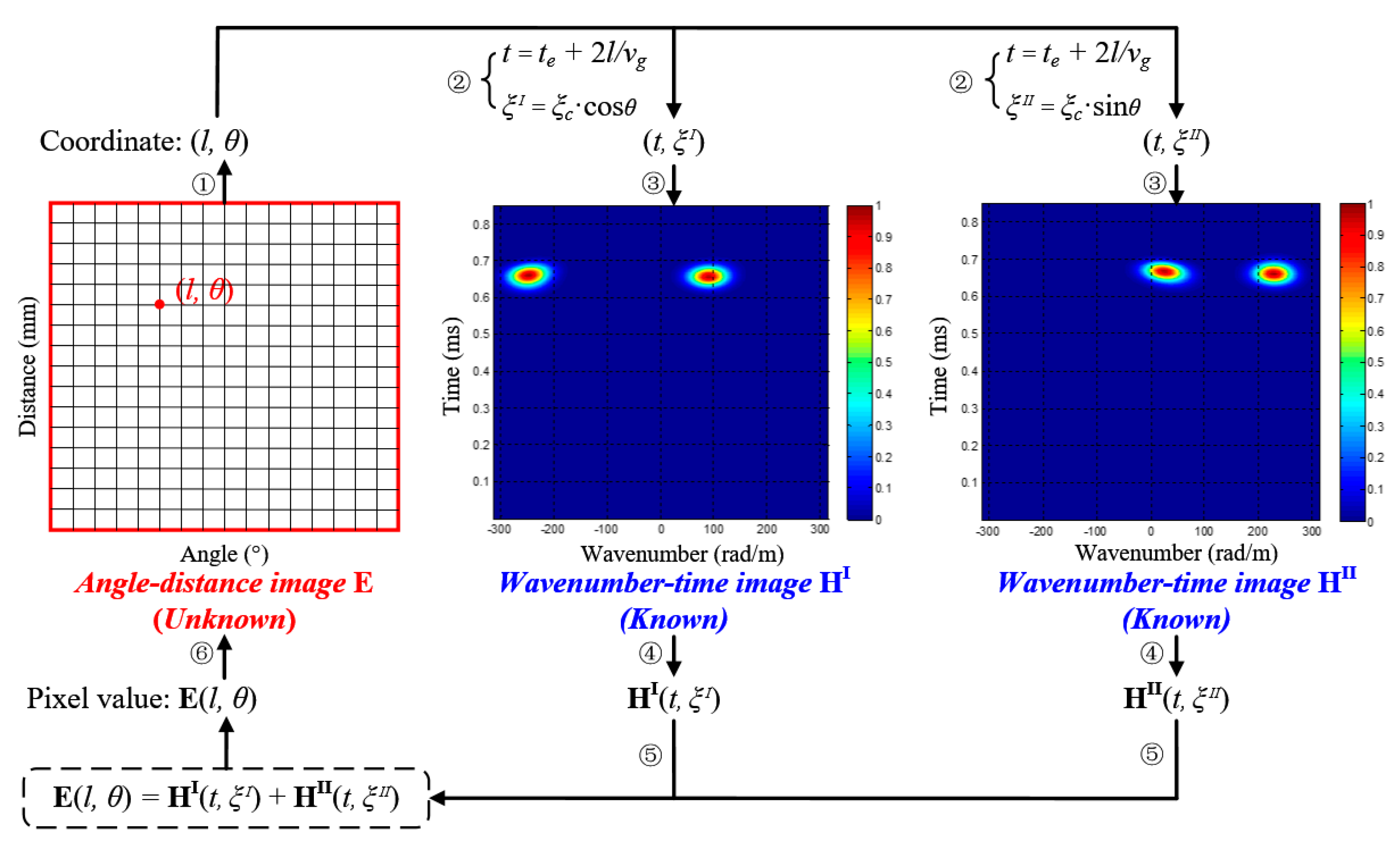
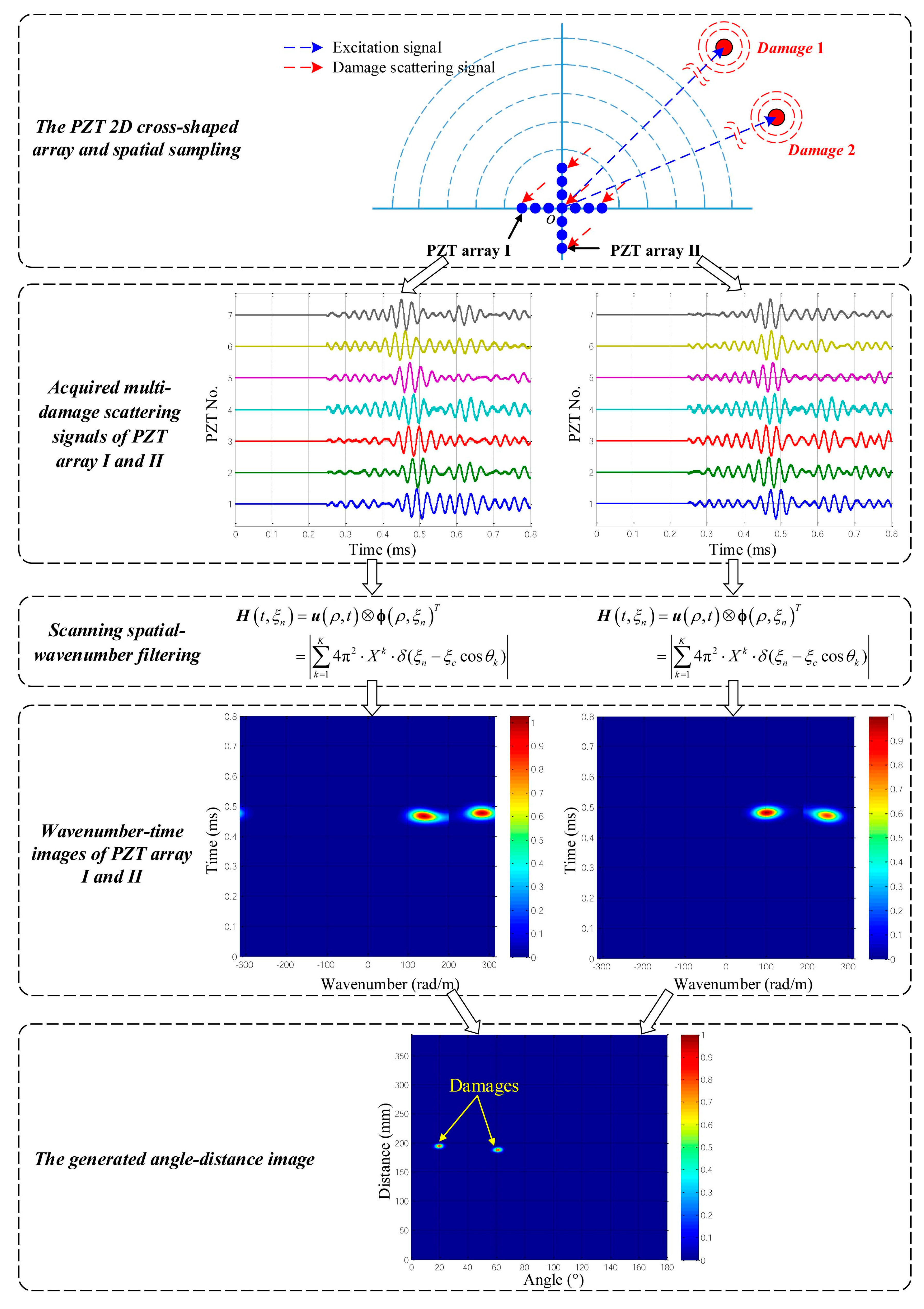

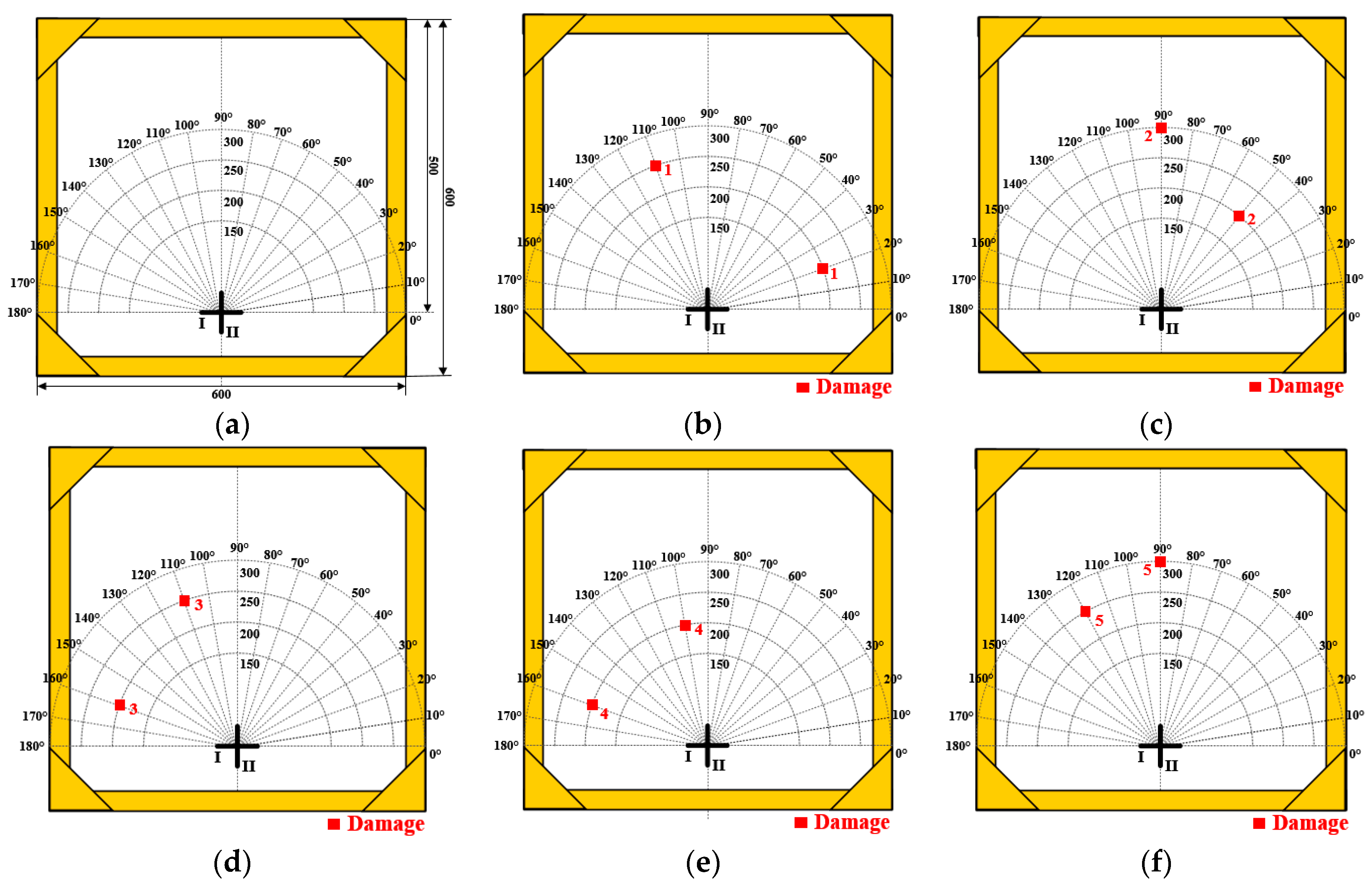

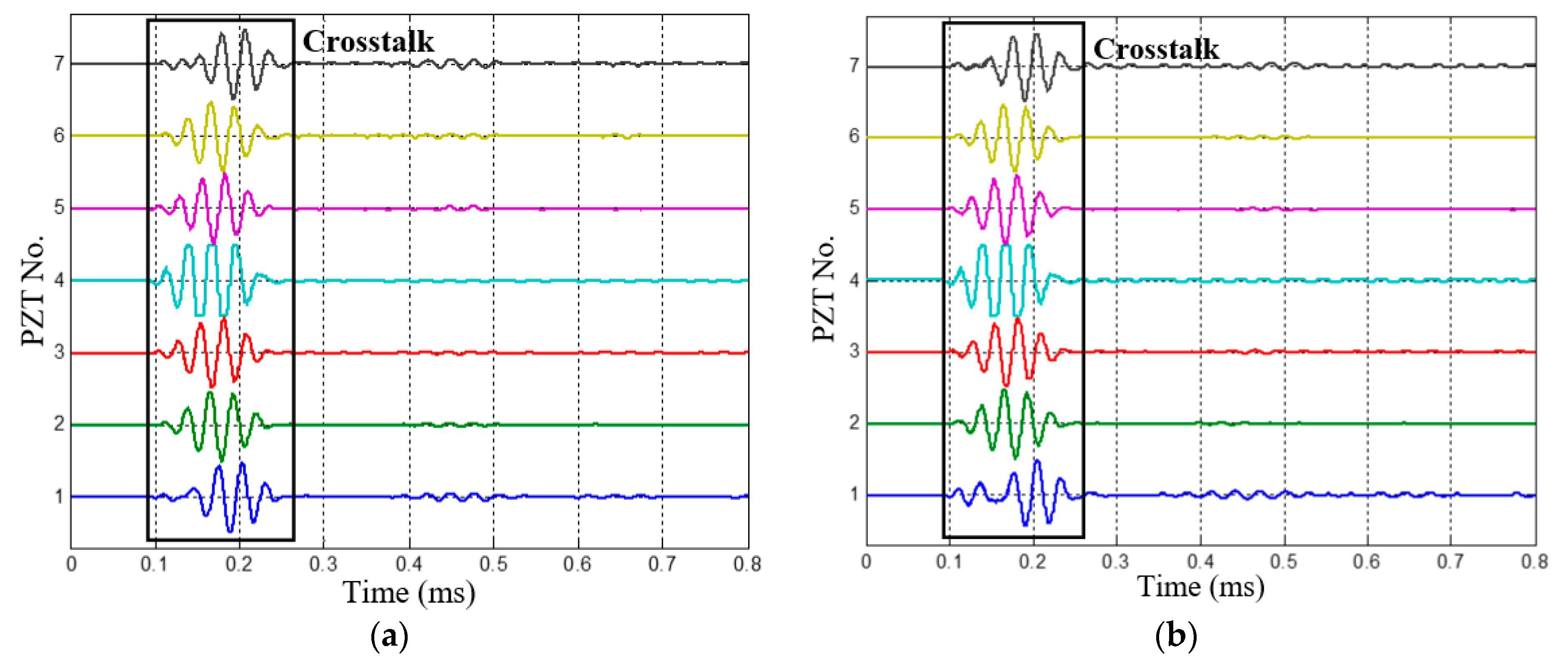
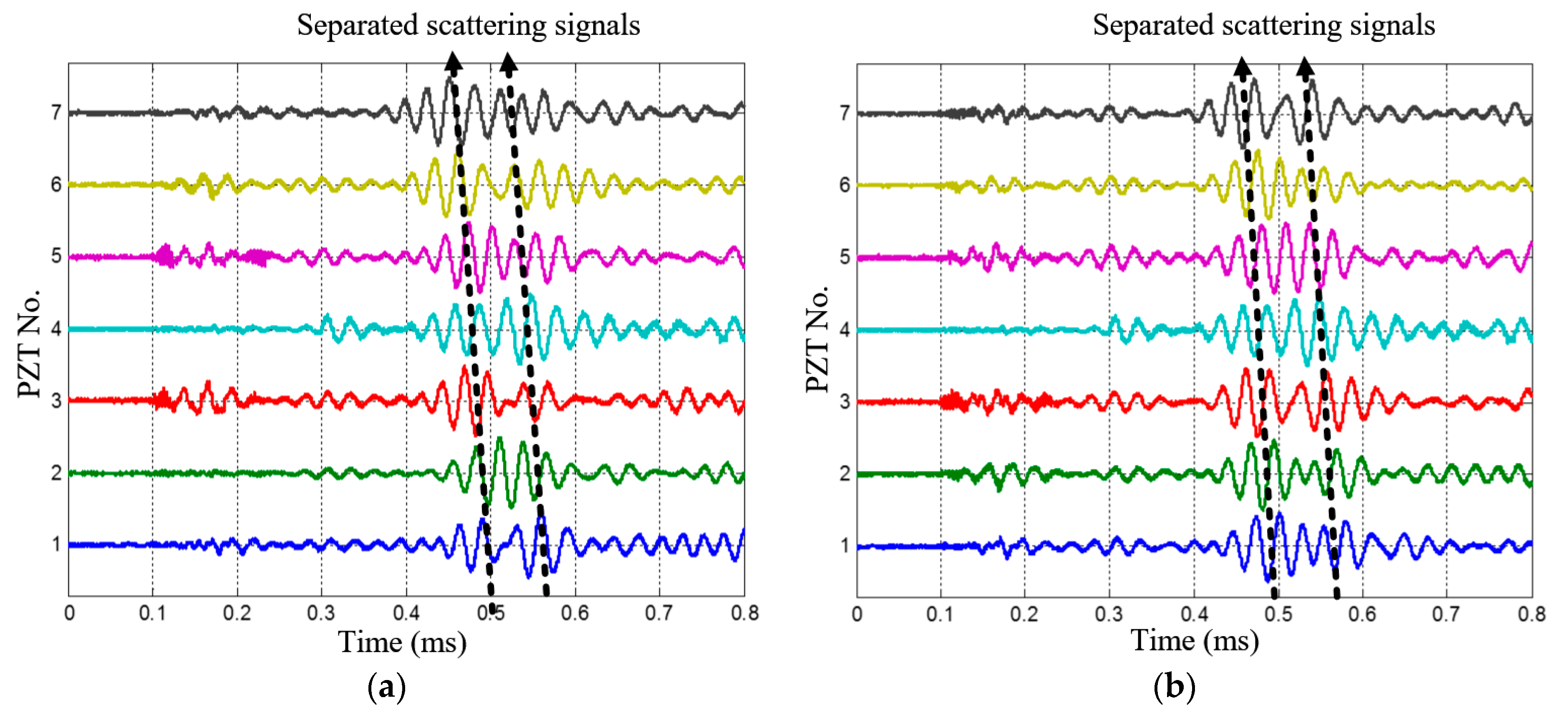
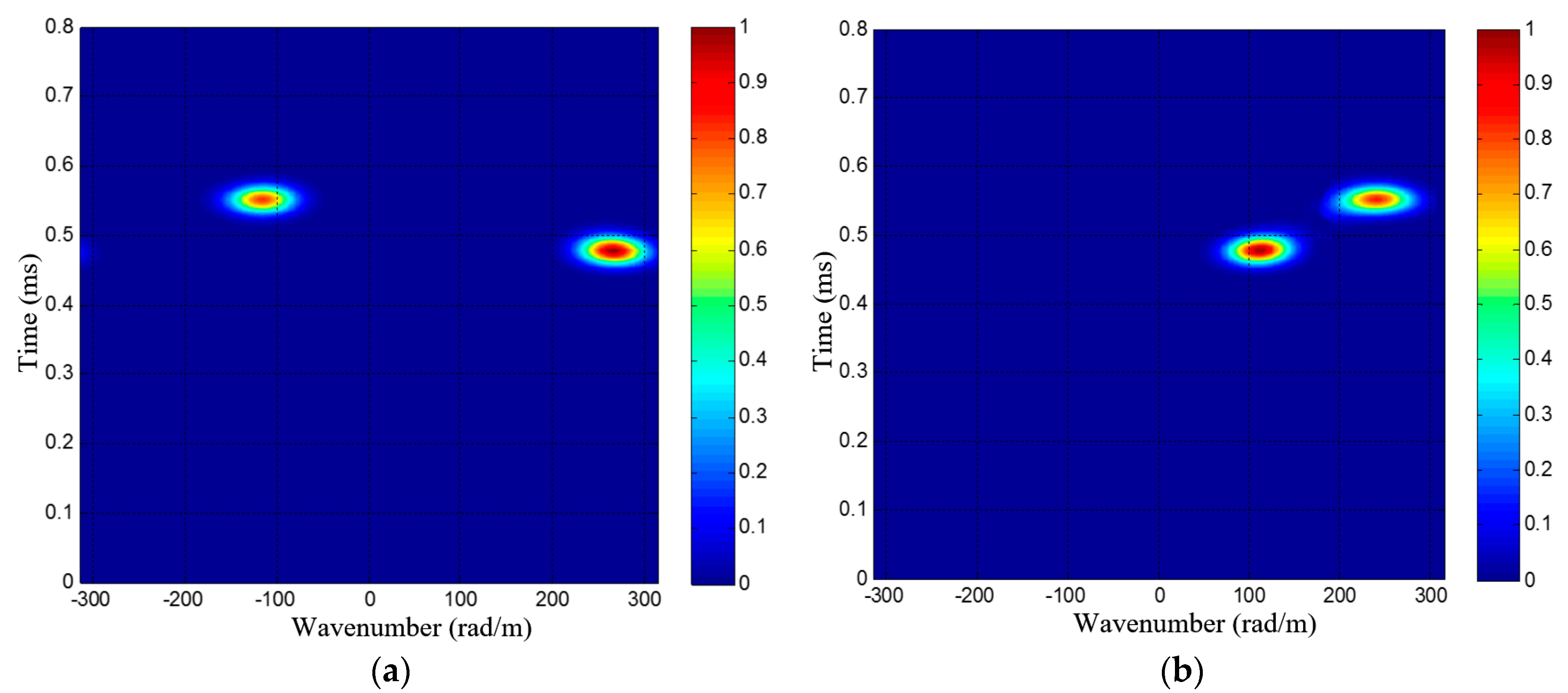
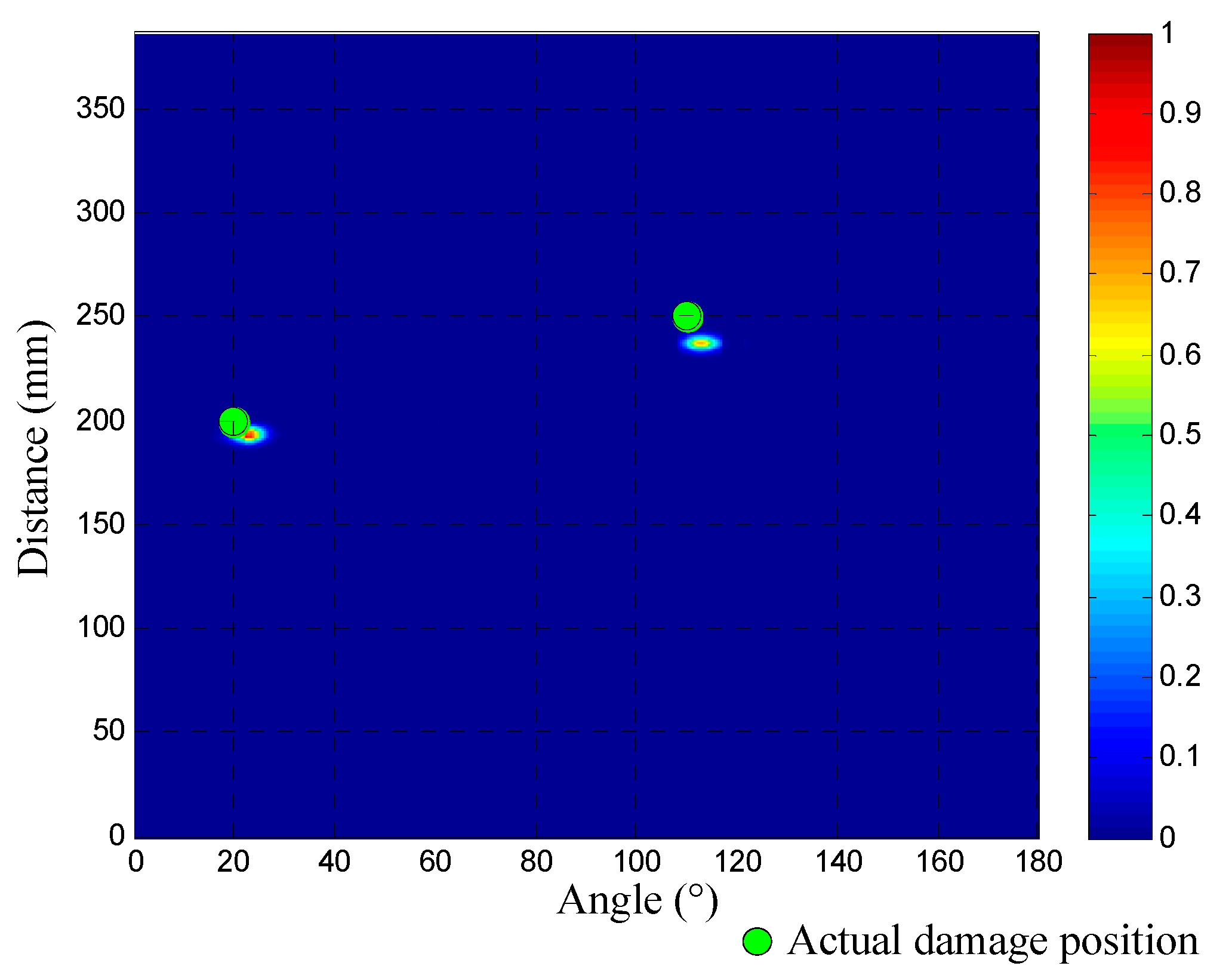
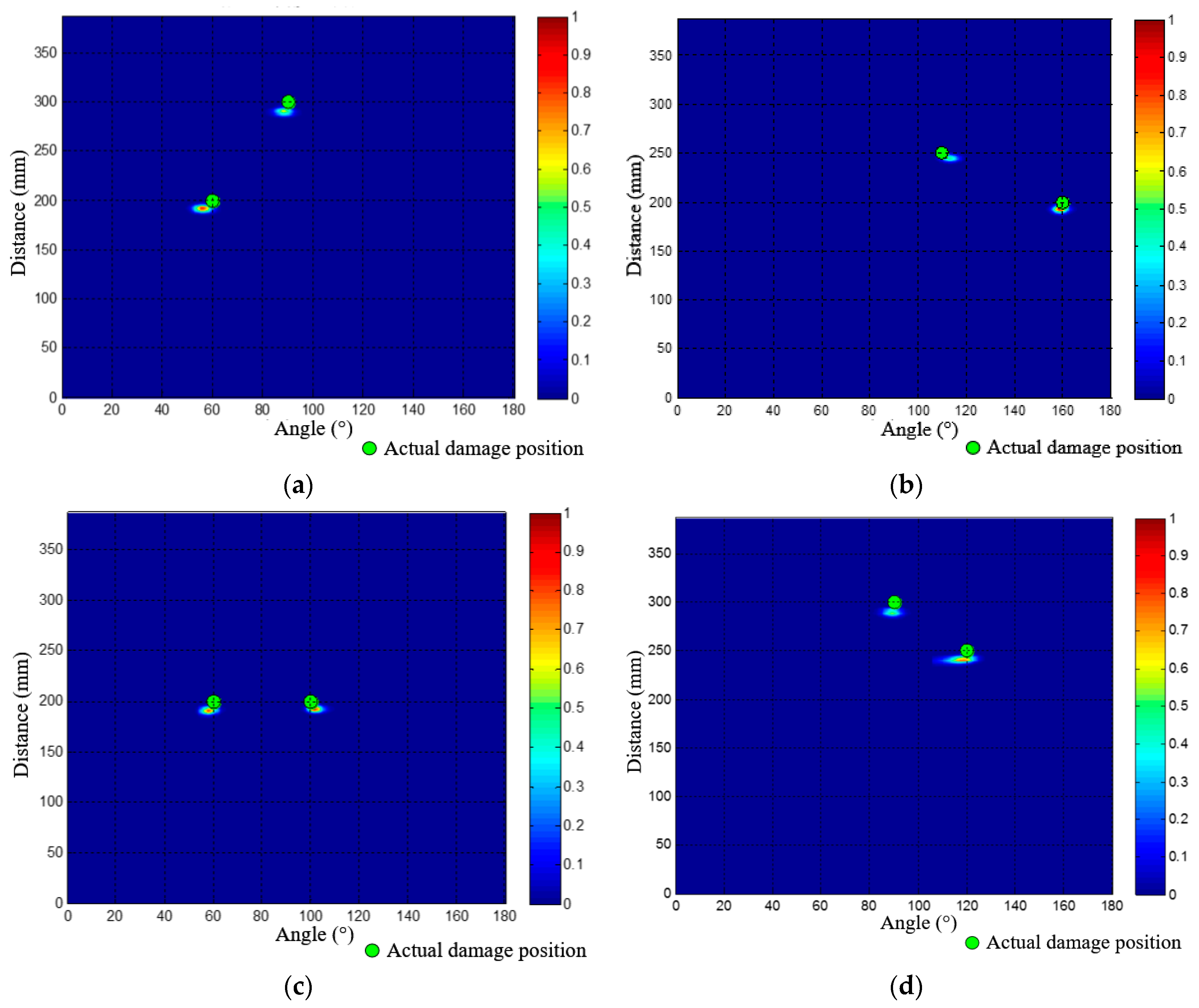
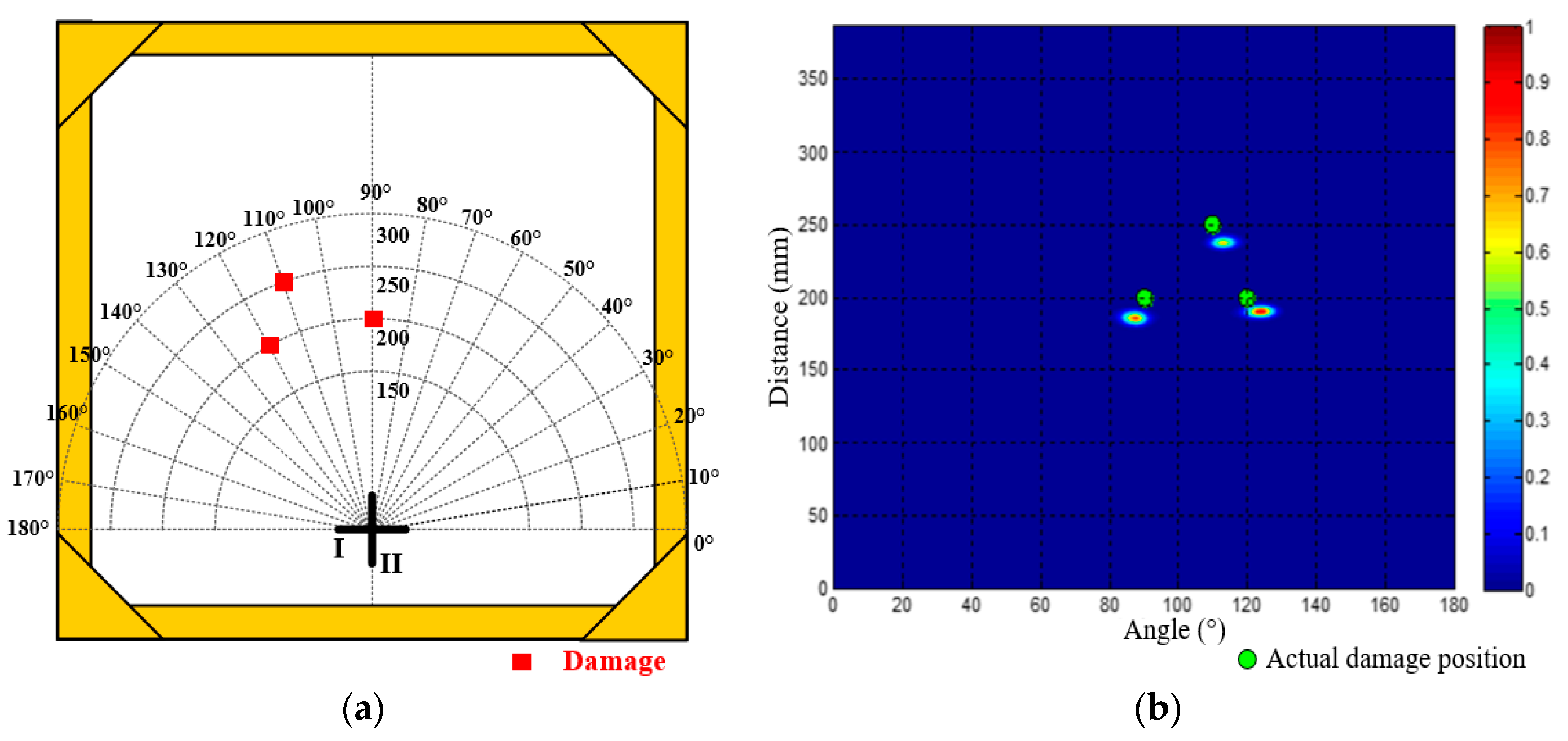

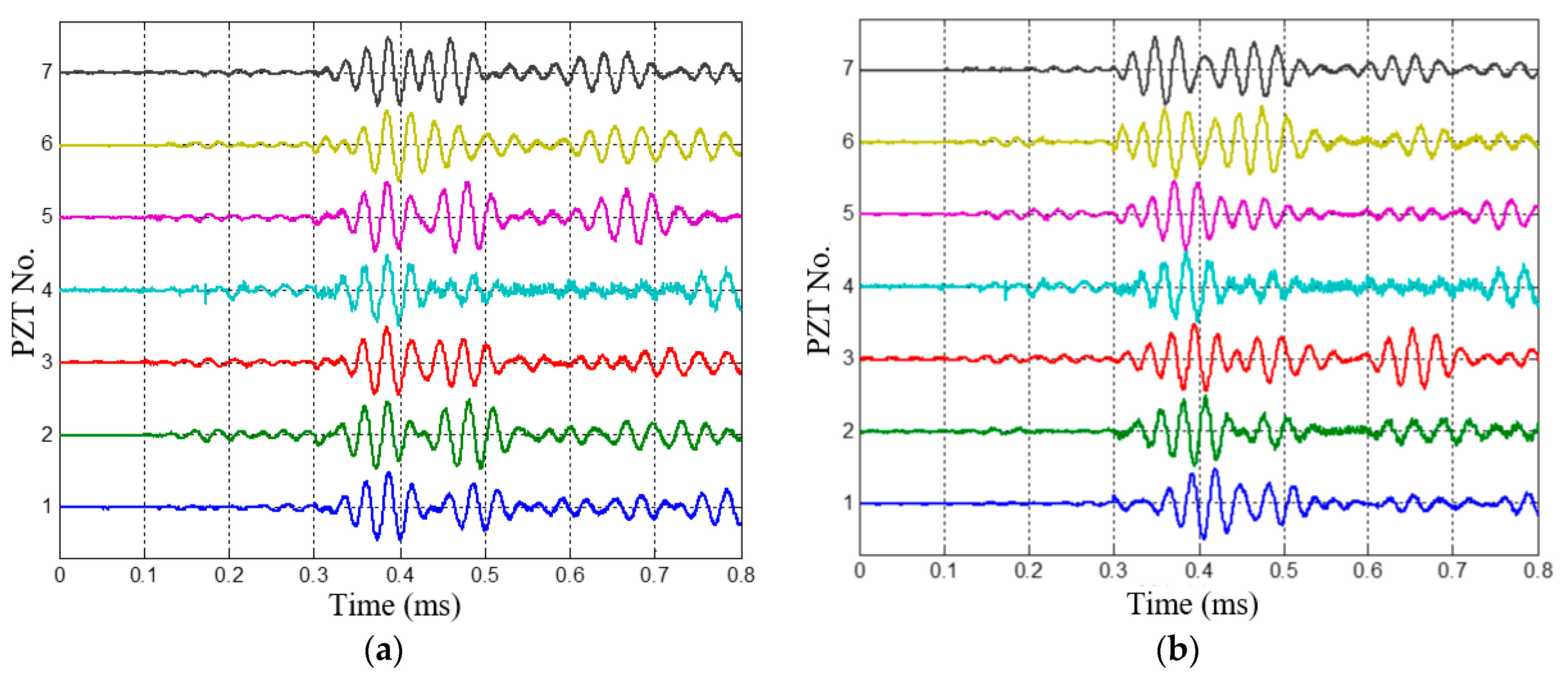
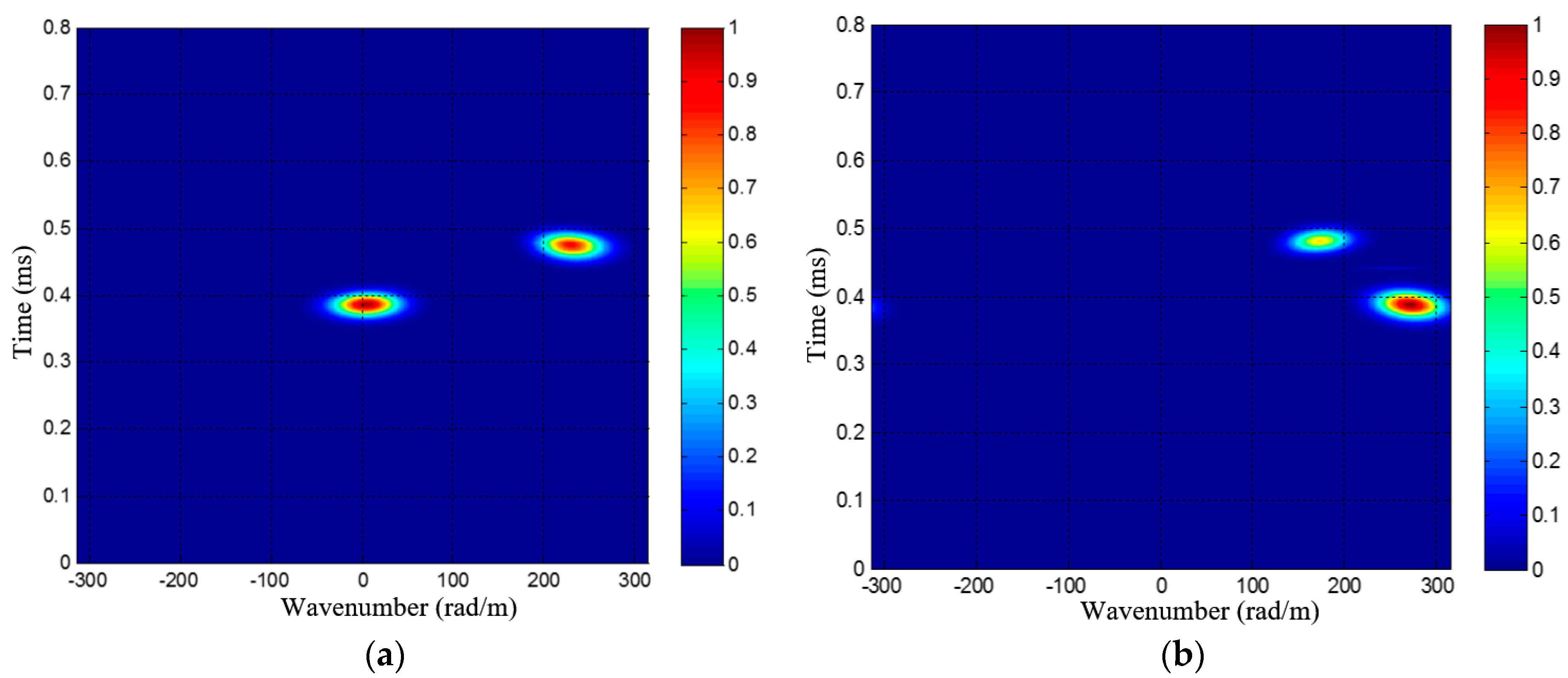

| Dual-Damage No. | Dual-Damage Position (mm, °) | |
|---|---|---|
| Damage 1 | Damage 2 | |
| 1 | (200, 20) | (250, 110) |
| 2 | (200, 60) | (300, 90) |
| 3 | (250, 110) | (200, 160) |
| 4 | (200, 100) | (200, 60) |
| 5 | (250, 120) | (300, 90) |
| No. | Damage 1 | Damage 2 | ||||
|---|---|---|---|---|---|---|
| Actual Position (mm, °) | Localization Result (mm, °) | Position Error (mm) | Actual Position (mm, °) | Localization Result (mm, °) | Position Error (mm) | |
| 1 | (200, 20) | (193.8, 22.7) | 11.2 | (250, 110) | (238.8, 112.1) | 14.3 |
| 2 | (200, 60) | (190, 56.5) | 15.6 | (300, 90) | (289.5, 88) | 14.7 |
| 3 | (250, 110) | (245.7, 112.5) | 11.6 | (200, 160) | (192.4, 158.9) | 8.5 |
| 4 | (200, 100) | (192.5, 101.6) | 9.3 | (200, 60) | (190.6, 57.9) | 11.8 |
| 5 | (300, 90) | (288.3, 88.7) | 13.5 | (250, 120) | (241.8, 119) | 9.3 |
© 2017 by the authors. Licensee MDPI, Basel, Switzerland. This article is an open access article distributed under the terms and conditions of the Creative Commons Attribution (CC BY) license (http://creativecommons.org/licenses/by/4.0/).
Share and Cite
Ren, Y.; Qiu, L.; Yuan, S.; Bao, Q. On-Line Multi-Damage Scanning Spatial-Wavenumber Filter Based Imaging Method for Aircraft Composite Structure. Materials 2017, 10, 519. https://doi.org/10.3390/ma10050519
Ren Y, Qiu L, Yuan S, Bao Q. On-Line Multi-Damage Scanning Spatial-Wavenumber Filter Based Imaging Method for Aircraft Composite Structure. Materials. 2017; 10(5):519. https://doi.org/10.3390/ma10050519
Chicago/Turabian StyleRen, Yuanqiang, Lei Qiu, Shenfang Yuan, and Qiao Bao. 2017. "On-Line Multi-Damage Scanning Spatial-Wavenumber Filter Based Imaging Method for Aircraft Composite Structure" Materials 10, no. 5: 519. https://doi.org/10.3390/ma10050519






